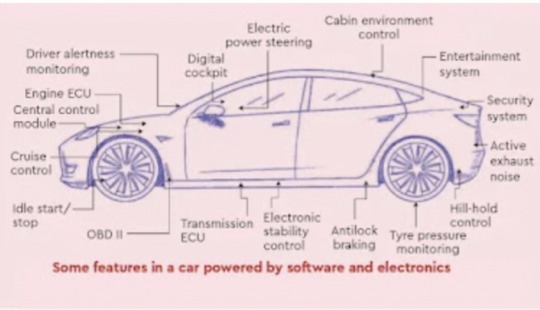#atmanirbhar bharat
Text
Interview: MBDA-L&T joint venture aims to be lead private missile-maker in India
Interview: MBDA-L&T joint venture aims to be lead private missile-maker in India
L&T MBDA Missile Systems Limited director Arun Ramchandani tells our editor N. C. Bipindra in an interview during DefExpo-2022 that ‘Sea Ceptor‘ offering to the Indian Navy for its air defence requirement is a futuristic technology. The company is currently making MICA missile equipment in Coimbatore in Tamil Nadu for the Indian Air Force‘s Mirage-2000 requirement, apart from exporting them.
Q.…

View On WordPress
#Aatmanirbar Bharat#Aatmanirbhar Bharat#Air Defence#Air Defence Missile#Air Defence System#Air Force#Anti-Tank Guided Missile#Army#Arun Ramchandani#ATGM#Atmanirbar Bharat#Atmanirbhar Bharat#Beyond Visual Range#BVR#Coimbatore#Combat Aircraft#Combat Jet#Fighter Aircraft#fighter jet#IAF#India#Indian#Indian Air Force#Indian Army#Indian Navy#L&T#L&T MBDA Missile Systems Limited#Larsen & Toubro#Larsen and Toubro#Make in India
9 notes
·
View notes
Text
Cabinet Approves Rs 24,657 Crore for 8 Railway Projects, Chakulia to Benefit
New railway lines to boost connectivity across 7 states, covering 900 km and 64 stations
The government’s ambitious rail expansion plan aims to enhance mobility and foster economic growth in underserved regions.
JAMSHEDPUR – The Cabinet Committee on Economic Affairs has greenlit eight significant railway projects, signaling a major boost to India’s transportation infrastructure.
The approved…
#Ajanta Caves connectivity#aspirational districts development#Atmanirbhar Bharat#जनजीवन#freight capacity increase#Indian Railways network growth#Infrastructure Development#Life#multi-modal connectivity plan#PM-Gati Shakti#railway expansion India#sustainable transportation
0 notes
Text
PM Modi's Prediction for Sensex on Lok Sabha Election Results Day: A Detailed Analysis
As India approaches another crucial Lok Sabha election, the financial markets are abuzz with anticipation. Historically, election results have had a significant impact on market movements, often reflecting investor sentiment towards the incoming government.
Prime Minister Narendra Modi, known for his economic reforms and market-friendly policies, recently made a bold prediction regarding the…

View On WordPress
#Atmanirbhar Bharat#BJP#Demonetization#Economic growth#Economic reforms#Election results#Financial Markets#GST#Indian stock market#Investment Strategy#Investor sentiment#Lok Sabha Elections#Make in India#Market Analysis#Market prediction#Market Trends#PM Modi#Political stability#Sensex#Stock market volatility
0 notes
Text
Navigating Atmanirbhar Bharat: A Journey to Self-Reliance
In the wake of global uncertainties caused by the COVID-19 pandemic, the Indian government introduced the "Atmanirbhar Bharat Abhiyan." This visionary policy initiative, spearheaded by Prime Minister Narendra Modi in May 2020, is all about empowering India to stand on its own feet across various sectors. It's a bold move aimed at tackling the economic hurdles thrown our way by the crisis. With a hefty economic package of Rs. 20 lakh crore, we’re still seeing this policy dig its roots deep into the Indian soil, four years since the pandemic. Simply said, this initiative isn't just a plan; it's a commitment to a future where self-sufficiency is the name of the game.
We’re detailing a breakdown of what this policy is, what can it do for you, and how you can apply to avail its empowerment. Keep reading to get crystal clear on all that there is to know about Atmanirbhar Bharat.
Unveiling Atmanirbhar Bharat
Atmanirbhar Bharat is more than just a policy; it's a strategic approach to building a self-sufficient and resilient Indian economy. It encompasses a broad spectrum of policy measures and reforms designed to reduce dependency on external factors, fostering economic well-being. The initiative addresses various sectors, such as agriculture, defense, mining, and finance, through structural reforms.
Key Components and Objectives
The Abhiyan's key components and objectives include economic reforms, support for MSMEs, promotion of local manufacturing, emphasis on technology and innovation, infrastructure development, healthcare reforms, financial inclusion, and much more. These initiatives collectively aim to enhance India's global competitiveness and resilience during crises.
Launch and Benefits
Officially launched on May 12, 2020, Atmanirbhar Bharat aims to reduce India's dependence on imports, boost MSMEs, encourage innovation, develop infrastructure, create job opportunities, and enhance global competitiveness. The initiative aligns with the goal of achieving strategic independence, particularly in critical sectors like defense.
Eligibility and Documentation
Eligibility criteria for specific schemes under Atmanirbhar Bharat vary based on the program. Documentation requirements may include business registration documents, financial statements, identity proof, address proof, bank account details, project proposals, compliance certificates, and industry-specific documents. Applicants must refer to detailed guidelines provided by relevant government departments.
Online or Offline Application
The availability of Atmanirbhar Bharat schemes through online or offline modes depends on the specific program. While many schemes are moving towards online application processes for efficiency, certain benefits may still be available through offline methods.
0 notes
Link
India’s inclusion in the recent global iPhone 15 launch, aligns with Apple’s victory in the country. iPhones now debut simultaneously in India with other major markets, reducing unauthorized sales and boosting consumer trust through official channels.
#geopolitical factors#political stability#supply chain#make in india#innovation#increased competition#easeofdoingbusiness#ease of doing business#supply chain development#consumer perception#intellectual property challenges#market dynamics#brand loyalty#Global iPhone Launch#@apple#@applesupport#iphone launch#atmanirbhar bharat#@applesupportcommunities-blog#atmanirbhar india#automation#technology#eodb#government initiatives#atmanirbharbharat#innovation unleashed#indian culture#indian market#startup business#big business
0 notes
Text
Atmanirbhar Bharat – Opportunities For MSMEs

Every Large company was an MSME someday. Keeping a sharp focus on the right priorities can be extremely beneficial
As a coach, I have seen many small and medium enterprises doing very well and also some really struggling to make things happen. For some companies whose offerings are aligned with the economy of the country, there has been significant improvement in the sales pipeline. Thanks for the Indigenisation push from the government.
Some thoughts on the benefits of Atmanirbhar Bharat and Indenization.
Economic Growth and Job Creation
Reduced Dependence on Imports
Technological Advancement and Innovation
Enhanced Resilience and Sustainability
Social Development and EmpowermentTap The Link Below to Read full Article- https://grovaleulers.com/atmanirbhar-bharat-opportunities-for-msmes/
0 notes
Text
Indian Navy "Atmanirbhar Adventure"
The Navy’s battle readiness and dedication to Aatmanirbhar Bharat are on display in this first effort.
Using its most recent indigenous guided missile destroyer, the INS Mormugao, the Indian Navy engaged a sea-skimming supersonic target successfully.
The Indian Navy’s first attempt demonstrates its dedication to Aatmanirbhar Bharat and its future-proof combat readiness, according to the naval…

View On WordPress
0 notes
Text
Sustainability Trends- Why eCommerce Business Need to Switch
Discover why eCommerce businesses need to embrace sustainability trends for long-term success. Explore the environmental, social, and economic benefits of adopting sustainable practices and learn how they can enhance customer loyalty and brand reputation. Stay ahead of the competition by making the switch to a more eco-friendly and socially responsible business model.

#sustainability trends in business#sustainable small businesses#b2b small business#product sustainability#sustaining product#sustainability trends#art#artist#artistic#Atmanirbhar Bharat#b2b#b2b online platform#crafts#digital platform#E-commerce#Expobazaar#handcrafted#fair#Home#home furnishing#ihgf fair#Indian Art#Make in India#merchandise#painting#small businesses#sustainability#Style#sustainable#trends
0 notes
Text
The Evolution of India's Manufacturing Industry: Investment Insights

India's manufacturing industry has undergone a remarkable transformation in recent years, driven by a combination of factors such as government initiatives, technological advancements, and shifting global dynamics. As one of the world's fastest-growing economies, India presents attractive opportunities for investors looking to capitalize on the growth and evolution of its manufacturing sector. In this blog, we'll explore the evolution of India's manufacturing industry and provide investment insights for those interested in investing in India's manufacturing sector.
1. Historical Overview of India's Manufacturing Industry:
India has a rich history of manufacturing dating back thousands of years, with traditional industries such as textiles, handicrafts, and metallurgy thriving in ancient times. However, the modern industrialization of India began in the late 19th century with the establishment of textile mills, followed by the development of steel, automotive, and chemical industries during the post-independence era. Over the decades, India's manufacturing landscape has evolved to encompass a diverse range of sectors, including automotive, electronics, pharmaceuticals, and engineering.
Here's a closer look at the historical evolution of India's manufacturing sector:
1. Ancient and Medieval Period:
India has a long tradition of craftsmanship and manufacturing excellence, with ancient civilizations producing a wide range of goods such as textiles, pottery, metalwork, and handicrafts. The Indus Valley Civilization, dating back to around 3300 BCE, had advanced urban centers with sophisticated manufacturing techniques and trade networks. During the medieval period, India became renowned for its textile industry, producing high-quality fabrics such as muslin, silk, and cotton that were highly sought after in international markets.
2. Colonial Era:
The colonial period saw significant changes in India's manufacturing landscape, with the arrival of European traders and the establishment of colonial rule by the British East India Company. The British colonial administration imposed policies that favored the export of raw materials from India and the import of finished goods from Britain, leading to the decline of indigenous industries and the stagnation of manufacturing activities. The British also introduced modern industries such as textiles, steel, and railways, albeit primarily for the benefit of colonial interests.
3. Post-Independence Industrialization:
India's independence in 1947 marked a new phase in the country's industrial development, with a focus on building a self-reliant economy through industrialization. The government implemented policies such as import substitution, industrial licensing, and state-led planning to promote domestic industries and reduce dependence on imports. This period witnessed the establishment of public sector enterprises, heavy industries, and infrastructure projects aimed at laying the foundation for industrial growth and economic development.
4. Liberalization and Economic Reforms:
In the early 1990s, India embarked on a path of economic liberalization and reforms aimed at opening up the economy, attracting foreign investment, and integrating with the global economy. The liberalization measures included deregulation, privatization, and trade liberalization, which led to increased competition, efficiency, and innovation in the manufacturing sector. Foreign direct investment (FDI) inflows into India's manufacturing industry surged, leading to the entry of multinational corporations and the establishment of joint ventures with Indian companies.
5. Modern Era:
Today, India's manufacturing industry has evolved into a diverse and dynamic sector encompassing a wide range of industries such as automotive, electronics, pharmaceuticals, textiles, chemicals, and engineering. The country has emerged as a global manufacturing hub, attracting investment from multinational companies and fostering the growth of domestic enterprises. India's manufacturing capabilities have expanded significantly, supported by advancements in technology, infrastructure development, and skilled workforce.
6. Government Initiatives and Policies:
The Indian government has implemented several initiatives and policies to promote the growth and competitiveness of the manufacturing sector. Programs such as Make in India, Atmanirbhar Bharat, and Production Linked Incentive (PLI) schemes aim to boost domestic manufacturing, attract investment, and enhance India's manufacturing capabilities. These initiatives provide incentives, subsidies, and regulatory support to encourage investment in key sectors and foster innovation and entrepreneurship.
2. Government Initiatives and Policy Reforms:
The Indian government has implemented several initiatives and policy reforms to promote the growth and competitiveness of the manufacturing sector. Programs such as Make in India, Atmanirbhar Bharat, and Production Linked Incentive (PLI) schemes aim to attract investment, boost domestic manufacturing, and enhance India's manufacturing capabilities. These initiatives provide incentives, subsidies, and regulatory support to encourage investment in key sectors such as electronics, pharmaceuticals, textiles, and automobiles.
Here's an in-depth explanation of how these initiatives and reforms have impacted the sector:
1. Make in India Campaign:
Launched in 2014, the Make in India campaign aims to promote India as a global manufacturing hub and attract investment in key sectors such as automotive, electronics, textiles, and pharmaceuticals. The campaign focuses on improving the ease of doing business, simplifying regulatory processes, and creating a conducive environment for domestic and foreign investors. By showcasing India's strengths in manufacturing capabilities, skilled workforce, and market potential, the Make in India initiative aims to boost domestic production, create jobs, and propel economic growth.
2. Atmanirbhar Bharat Abhiyan:
The Atmanirbhar Bharat Abhiyan, or Self-Reliant India Mission, was launched in 2020 with the objective of building a self-reliant and resilient economy. The initiative emphasizes the need for reducing dependency on imports, promoting domestic manufacturing, and enhancing India's capabilities in critical sectors. Through measures such as import substitution, localization of supply chains, and support for indigenous innovation, the Atmanirbhar Bharat Abhiyan seeks to strengthen India's manufacturing ecosystem and reduce vulnerabilities to external disruptions.
3. Production Linked Incentive (PLI) Schemes:
The government has introduced several Production Linked Incentive (PLI) schemes to incentivize domestic manufacturing and promote investment in strategic sectors. These schemes offer financial incentives, subsidies, and tax breaks to companies that manufacture specified products domestically and meet predetermined production targets. The PLI schemes cover sectors such as electronics manufacturing, pharmaceuticals, textiles, automobiles, and renewable energy, aiming to boost domestic production, enhance competitiveness, and create employment opportunities.
4. Goods and Services Tax (GST):
The implementation of the Goods and Services Tax (GST) in 2017 marked a significant milestone in India's tax reform efforts and had a transformative impact on the manufacturing sector. GST replaced a complex system of multiple indirect taxes with a unified tax regime, streamlining tax compliance, reducing logistics costs, and improving the ease of doing business. The simplified tax structure and seamless interstate movement of goods under GST have benefited manufacturers by eliminating tax cascading, enhancing supply chain efficiency, and promoting business competitiveness.
5. Ease of Doing Business Reforms:
India has undertaken several reforms to improve the ease of doing business and facilitate investment in the manufacturing sector. These reforms include streamlining regulatory processes, digitizing government services, reducing bureaucratic hurdles, and strengthening investor protection measures. Initiatives such as online business registration, single-window clearances, and time-bound approvals have simplified administrative procedures and enhanced transparency, making it easier for companies to set up and operate manufacturing facilities in India.
6. Infrastructure Development Initiatives:
The government has prioritized infrastructure development as a key enabler for the manufacturing sector's growth and competitiveness. Infrastructure projects such as industrial corridors, dedicated freight corridors, and port modernization initiatives aim to enhance connectivity, logistics efficiency, and access to markets. Investments in infrastructure development create a conducive environment for manufacturing investments by reducing transportation costs, improving supply chain reliability, and enhancing access to raw materials and markets.
3. Shift towards High-Tech and Advanced Manufacturing:
India's manufacturing landscape is undergoing a transformation towards high-tech and advanced manufacturing, driven by technological advancements and global market trends. The adoption of digital technologies such as automation, robotics, artificial intelligence, and 3D printing is revolutionizing manufacturing processes, increasing productivity, and improving quality and efficiency. Startups and established companies alike are investing in advanced manufacturing technologies to stay competitive and meet evolving customer demands.
4. Focus on Sustainability and Green Manufacturing:
There is a growing emphasis on sustainability and green manufacturing practices in India's manufacturing industry, driven by environmental concerns and regulatory mandates. Companies are increasingly adopting eco-friendly processes, renewable energy sources, and resource-efficient technologies to minimize their environmental footprint and comply with sustainability standards. Investors can capitalize on the growing demand for sustainable manufacturing solutions by investing in companies that prioritize environmental stewardship and corporate social responsibility.
5. Integration of Industry 4.0 Technologies:
Industry 4.0, characterized by the convergence of digital technologies and physical systems, is reshaping India's manufacturing landscape. IoT (Internet of Things), big data analytics, cloud computing, and cyber-physical systems are enabling smart factories, predictive maintenance, and connected supply chains, transforming traditional manufacturing operations. Investors can identify opportunities in startups and companies that are driving the adoption of Industry 4.0 technologies and digitizing their manufacturing processes for greater efficiency and competitiveness.
6. Global Supply Chain Realignment and Reshoring Trends:
The COVID-19 pandemic has accelerated global supply chain realignment and reshoring trends, prompting companies to reassess their dependence on overseas suppliers and prioritize domestic manufacturing capabilities. India, with its large consumer market, skilled workforce, and favorable business environment, is emerging as an attractive destination for companies looking to diversify their supply chains and establish local manufacturing hubs. Investors can capitalize on this trend by investing in sectors such as electronics, pharmaceuticals, and automotive that are witnessing increased localization and reshoring activities.
7. Challenges and Opportunities for Investors:
While India's manufacturing sector presents significant opportunities for investors, it also faces several challenges such as infrastructure bottlenecks, regulatory complexities, and skill shortages. However, these challenges can be overcome with strategic investments, technology adoption, and collaboration between the public and private sectors. Investors with a long-term outlook and a risk-tolerant approach can leverage India's manufacturing growth story to generate attractive returns and contribute to the country's economic development.
India's manufacturing industry is undergoing a period of rapid evolution, driven by government initiatives, technological advancements, and shifting global dynamics. Investors looking to capitalize on the growth and transformation of India's manufacturing sector have a wide range of opportunities across sectors such as high-tech manufacturing, sustainable practices, Industry 4.0 technologies, and global supply chain realignment. By identifying promising investment avenues and partnering with innovative companies, investors can play a key role in shaping the future of India's manufacturing landscape while generating attractive returns on their investments.
This post was originally published on: Foxnangel
#evolution of india#indian manufacturing#india manufacturing industry#manufacturing#manufacturing sector#foreign direct investment#FDi In India#atmanirbhar bharat abhiyan#invest in india#foxnangel
0 notes
Text
Interview: Rolls-Royce working on opportunities for Adour, MTU engines for India armed forces
Interview: Rolls-Royce working on opportunities for Adour, MTU engines for India armed forces
In an interview during DefExpo-2022, Rolls-Royce India and South Asia president Kishore Jayaraman tells our editor N. C. Bipindra that the company aims to partner the Indian Navy for design, development and deployment of India’s first electric warship.
Q. Kindly provide an overview of the progress of Rolls-Royce’s supplies to the Indian armed forces going on at present?
Kishore Jayaraman,…

View On WordPress
#Aatmanirbar Bharat#Aatmanirbhar Bharat#Adour Mk871#Aeroengine#Aerospace#Air Force#Aircraft#Arjun#Arjun Main Batle Tank#Armed Forces#Army#Atmanirbar Bharat#Atmanirbarta#Atmanirbhar Bharat#Atmanirbharta#Bangalore#Battle Tank#Bengaluru#Bharat Forge#Bharat Forge Limited#Carrier Strike Group#Chopper#Coast Guard#Combat Aircraft#Combat Jet#Copter#Defence#Defence Service Delivery Centre#Defense#DefExpo
0 notes
Photo

આયુષ્યમાન ભારત,સ્વસ્થ જીવનની ગેરંટી ▪️પ્રધાનમંત્રી જન આરોગ્ય યોજના ▪️11 કરોડ ગરીબ પરિવારોને ફાયદો ▪️50 કરોડથી વધુ લાભાર્થી ▪️ 21 કરોડથી વધુ આયુષ્માન કાર્ડનું વિતરણ ▪️4 કરોડથી વધુ લાભાર્થીએ લીધો સારવારનો લાભ સ્વસ્થ ભારત, સશક્ત ભારત #bjymnaroda #lovejoshi4bjym #bjpnaroda #health #bharat #atmanirbharbharat #atmanirbhar #atmanirbhar #healthy #pradhanmantriarogyayojana #pmjay #primeminister #primeministerofindia #pmjay #janarogya #healthjourney #marugujarat #garvigujarat #gujarati https://www.instagram.com/p/CnHQH1uMDdQ/?igshid=NGJjMDIxMWI=
#bjymnaroda#lovejoshi4bjym#bjpnaroda#health#bharat#atmanirbharbharat#atmanirbhar#healthy#pradhanmantriarogyayojana#pmjay#primeminister#primeministerofindia#janarogya#healthjourney#marugujarat#garvigujarat#gujarati
0 notes
Text
Seminar on “SABKA PRAYAS AND ATMANIRBHAR BHARAT”
KCC Institute of Legal and Higher Education, Greater Noida is organizing A Two-Day ICSSR Sponsored National Seminar on “SABKA PRAYAS AND ATMANIRBHAR BHARAT” on 11-12 November 2022.
This Seminar on “Sabka Prayas and Atamnirbhar Bharat” is about celebrating “Azadi ka Amrit Mahotsav” through the involvement of everyone in making
India a Self Reliant. It covers Actions@75 which highlights steps being taken to implement policies and actualize commitments. This seminar will talk about the outcome of Sabka Prayas in the making of Aatma Nirbhar Bharat.
Academicians, Research scholars, CorporateExperts, and Officials are invited to give presentations at the National Seminar.
#kcc #kccinstitutes #kccitm #kccilhe #bba #bca #bjmc #BALLB #BBLLB #aktu #btech #delhincr #greaternoida #ggsipu #mba #ipu #bcom

22 notes
·
View notes
Text
SEMICONDUCTORS
(How India is progressing in this sector)
1.What is a Semiconductor?
Semiconductors are materials which has electrical conductivity ranging between conductors and insulators. Conductors are good conductors of electricity while Insulators are bad conductors of electricity.


2.Where is a semiconductor used?
Semiconductors are used in manufacture of various electronic devices like diodes, transistors and integrated circuits. The most popular use of a semiconductor is in cars. In vehicles these semiconductor chips are used to control emission systems, driver assist systems etc. Not only in electric cars these chips are also used in petrol cars.


3.A Semiconductor is made up of which material?
Generally a Semiconductor chip is made up of silicon, germanium and gallium arsenide. Out of these three germanium is the oldest.
4.How will a semiconductor help?
First of all semiconductors regulate the flow of electricity and assist in making electronics function. Secondly the electrical conductivity of a semiconductor can be controlled over a wide range making them versatile for various applications. As I told you earlier that a semiconductor is not only used in electric cars but also in petrol cars, this is because semiconductors increase fuel efficiency in cars. By using semiconductors in engine control systems car manufacturers can achieve more precise control of the engine resulting in improved fuel economy and lower emissions.
So these were some common questions people ask when they hear about a semiconductor.
Now you must know that how it will help India and what steps India is taking to manufacture semiconductors in India.
At present Taiwan, USA, Japan, South Korea, China, Israel, Netherlands, UK and Germany can manufacture semiconductors. Out of these countries China and Taiwan produce a large amount of semiconductor.
More exciting thing was that USA and China were in contention with each other in this matter. During era of Donald Trump there aroused a semiconductor war between USA and China. USA wanted to disrupt China's semiconductor manufacturing and hence put a lot of sanctions on China. USA also funded Taiwan and wanted Taiwan to produce more semiconductors than China.


In all this India was benefited a lot. India also wanted to develop semiconductor plants in country and facilitate ATMANIRBHAR BHARAT initiative.
https://ism.gov.in/ this is the link of Government's India Semiconductor Mission. This mission aims at forming a semiconductor ecosystem in India.


Government of India is also working on many other semiconductor initiatives like SPECS initiative. Moreover a joint venture of Vedanta electronics manufacturing giant Foxconn has finalised Dholera Special Investment Region near Ahmedabad for setting up their semiconductor display manufacturing facility.

So much progress is happening in India and surely it will facilitate India's economy and will also provide more job opportunities. India will surely emerge as a Developed nation in upcoming years and these semiconductor initiatives are like a cherry on the cake.
Watch this video for more info.
I hope you liked my article
Pls put forward your views in comment section
Till then PEACE OUT........
My insta : sm_it_22
~Written By Smit.
3 notes
·
View notes
Text
Resilience and growth of Indian economy
Welcome to my blog! As an observer and participant in the Indian economy, I have witnessed firsthand the remarkable resilience and growth it has demonstrated over the years. In this blog, I would like to share my personal insights and experiences, shedding light on the factors that have contributed to India's economic development and its potential for future growth.
1. Steadfast Recovery from the COVID-19 Pandemic:
The COVID-19 pandemic sent shockwaves throughout the global economy, and India was no exception. However, the Indian economy has exhibited resilience and shown signs of a robust recovery. After a significant contraction in the first quarter of 2020, the economy rebounded strongly, recording positive growth rates in subsequent quarters.
2. Impressive GDP Growth:
India’s gross domestic product (GDP) growth rate has witnessed a notable rebound. In the fiscal year 2021-2022, India’s GDP expanded by 9.5 percent, showcasing a strong recovery and outperforming most other major economies. This rebound can be attributed to a combination of factors, including government stimulus measures, a revival in consumer demand, and increased industrial production.
3. Focus on Atmanirbhar Bharat (Self-Reliant India):
The government’s Atmanirbhar Bharat initiative, aimed at making India self-reliant and reducing dependency on imports, has played a significant role in shaping the recent performance of the Indian economy. Through policies such as the Production-Linked Incentive (PLI) scheme, the government has incentivized domestic manufacturing, attracting investments and promoting job creation across various sectors.
4.Challenges and the Way Forward:
While the Indian economy has demonstrated resilience and rebounded from the impact of the pandemic, certain challenges persist. These include addressing unemployment, strengthening the banking sector, addressing inequalities, and investing in infrastructure development. Continued focus on reforms, investments in education and skill development, and fostering innovation will be crucial in sustaining and accelerating India’s economic growth in the long run.
by- Vaibhav Rallan
class- XI-D
3 notes
·
View notes
Text
Eco-conscious + E-commerce = ExpoBazaar

Discover ExpoBazaar, the ultimate online shopping platform for eco-conscious consumers. Shop a wide range of sustainable products, from fashion to home goods, while supporting a greener future. Join ExpoBazaar today and make a positive impact with every purchase.
#entrepreneur investor#eco friendly products wholesale#wholesale eco friendly products#ecommerce sales#b2b ecommerce platforms#b2b ecommerce trends#eco-conscious#Atmanirbhar Bharat#buyers#E-commerce#Eco-conscious#ecofriendly products#furniture#handcrafted#handicraft products#home accessories#Make in India#seller#sustainable development#sustainable items#wholesale#art#Artisans#artist#artistic#b2b#b2b ecommerce#b2b online platform#entrepreneurs#ihgf fair
0 notes
Link
#AtmaNirbharBharatscheme#Bengaluru#BSE#buildings#civilconstructioncompany#constructionarm#effluenttreatment#electrolyzermanufacturing#EPC#Gigawatt-scalemanufacturingfacility#greenhydrogenmarket#heavyengineering#hydrocarbonbusiness#installation#intra-daytrade#Jharkhand#L&Tshares#Larsen&Toubro#McPhyEnergy#offshorepackages#S&PBSESensex#turnkeybasis#watertreatment
2 notes
·
View notes